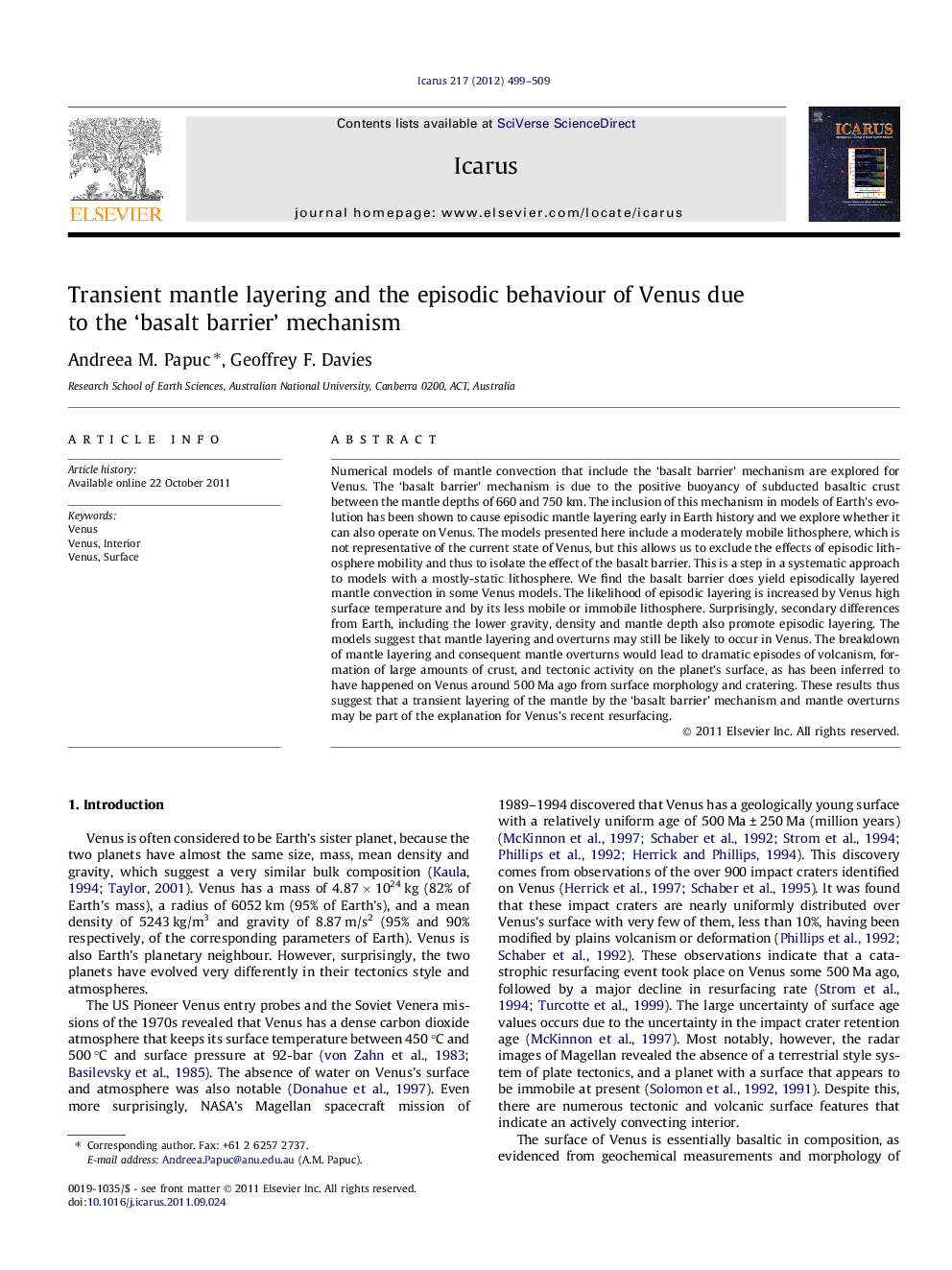| Article ID | Journal | Published Year | Pages | File Type |
|---|---|---|---|---|
| 1773677 | Icarus | 2012 | 11 Pages |
Numerical models of mantle convection that include the ‘basalt barrier’ mechanism are explored for Venus. The ‘basalt barrier’ mechanism is due to the positive buoyancy of subducted basaltic crust between the mantle depths of 660 and 750 km. The inclusion of this mechanism in models of Earth’s evolution has been shown to cause episodic mantle layering early in Earth history and we explore whether it can also operate on Venus. The models presented here include a moderately mobile lithosphere, which is not representative of the current state of Venus, but this allows us to exclude the effects of episodic lithosphere mobility and thus to isolate the effect of the basalt barrier. This is a step in a systematic approach to models with a mostly-static lithosphere. We find the basalt barrier does yield episodically layered mantle convection in some Venus models. The likelihood of episodic layering is increased by Venus high surface temperature and by its less mobile or immobile lithosphere. Surprisingly, secondary differences from Earth, including the lower gravity, density and mantle depth also promote episodic layering. The models suggest that mantle layering and overturns may still be likely to occur in Venus. The breakdown of mantle layering and consequent mantle overturns would lead to dramatic episodes of volcanism, formation of large amounts of crust, and tectonic activity on the planet’s surface, as has been inferred to have happened on Venus around 500 Ma ago from surface morphology and cratering. These results thus suggest that a transient layering of the mantle by the ‘basalt barrier’ mechanism and mantle overturns may be part of the explanation for Venus’s recent resurfacing.
